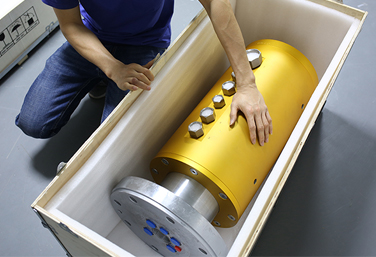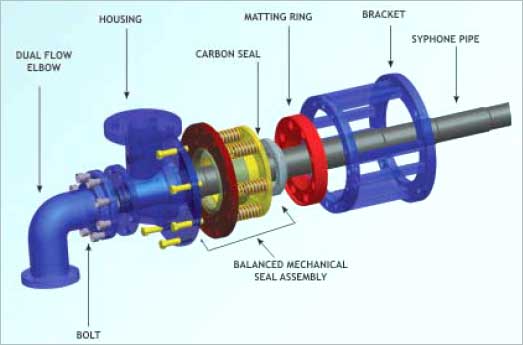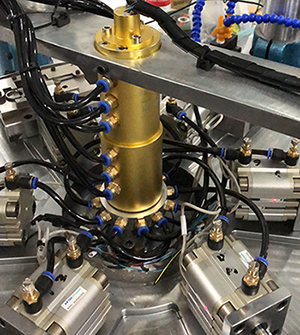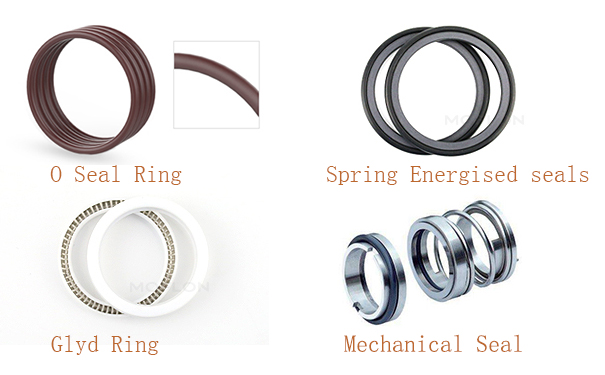This is the most comprehensive guide to understanding rotary joints and unions.

In this guide, you will be taught the basics of a rotary joint, the ultimate glossary of rotary joint terms, misalignment of rotary joints, achieving optimal rotary joint and union performance, and carbon guide versus rolling element bearings.
MOFLON produces standard line rotary joints suitable for use in defence, aerospace, and commercial sectors. We design our products for long-life use with dust seals and internal pressure seals.
The MOFLON rotary joints function at wide temperature and pressure bands and boast a high rotating stability and peak power handling. Our experienced designers can customise and fulfil any custom design requirements to suit your needs.
Bottom Line
If you want to achieve an optimal rotary joint and rotary union performance, appropriate equipment and regular maintenance are the principles to adhere to.
Contents
Chapter 1: Rotary Joint Basics
Chapter 2: The Ultimate Glossary of Rotary Joint Terms
Chapter 3: Misalignment of Rotary Joints
Chapter 4: Achieving Optimal Rotary Joint & Union Performance
Chapter 5: Carbon Guide Vs. Rolling Element Bearings
Chapter 1
What is a rotary joint?
What are the main components of a rotary joint?
Welcome and let's lay a foundation of our discussion.
A rotary joint can also be called a rotary union or swivel. It is an equipment that offers an interface which permits fluid media- air, steam, or liquid- to be transferred between a rotating component and a static component.
The basic parts of a rotary joint are the body or housing, shaft, guide, and seal.

The part holds the fluid media, and in some instances facilitates hose connection. Besides, it functions as a torque restraint.
The shaft links a rotary joint to other equipment. There are three types of shaft connection choices: tapered, straight, and flanged threads.
This section transfers the rotational force to bring alignment to the rotary union.
This is the first wearing section of a swivel. Internal fluid pressure and friction force from the spinning shaft cause wear and tear to the seal. Application aspects like the speed of a machine, temperature, and fluid determine the lifespan of the seal.
The component is inserted between a rotary joint head and housing to safeguard internal components when the head is detached.
Chapter 2
Enrich your expertise of rotary joints by having the following terminologies in your fingertips.
Anti-Rotation Rods.These are stiff, smooth rods that extend from a special bracket or lug hole on the body or head of a swivel to a stationary external surface.
Balanced Seal rotating unions. Mostly used with fluid substances like water and coolant, but can also be used with steam and other gases. The balanced seal techniques depend on external spring pressure to enable a positive seal within the rotating union.

Dryer Bars. Stainless axial bars, installed within the rolls to bring turbulence, increase the roll surface temperature uniformity and rate of heat transfer.
Dual Flow. When the media flows into and out of the rotary joint using a syphon or distribution pipe.
Externally Supported Rotary Joints. Depend on external stationary framing to support the body of the rotary joint.
Flexible Metal Hose. A hose that holds media pressure and offers flexibility in the direction of a rotary joint.
Guide. A type of carbon bushing fixed around the nipple to support a rotary joint.
Media. These are the fluids used in rotary joints and unions.
Multi-Passage Unions. Are essential when more than one media is used simultaneously to provide multiple seals between stationary connections and rotating equipment.
Over-the-Shaft Rotary Union (OTS). A solution for machinery which requires cooling on the drive side of the driven rolls or for rolls that cannot accept an axially mounted union for other reasons.
Pressure Joint. A type of rotary where an internal seal ring carries the whole force created by the internal fluid pressure tending to push the stationary body against the rotary joint's nipple.
Q-Flange. A quick release flange that is manufactured as a set. It comprises of a flange, split ring or wedge, and a copper or aluminium gasket.
Rotary Swivels. Coupling between two parts enabling one to revolve without turning the other. They are used when bidirectional rotation is required.
Rotor – The rotating part of a rotary joint or union that connects to the rotating equipment. Can be threaded or flanged.
Seal Rings – Main wearing part of the rotary joint or union. During operation, the seal or seals experience internal loading forces from fluid pressure, as well as friction from contact with the rotating nipple and the stationary housing.
Sight Flow Indicators - Provides visual observation of liquid and gas flows in a pipeline.
Single-Flow – When the media flows in one direction through the rotary joint. Also known as through-flow.
Syphon – An arrangement of piping inside a rotating cylinder consisting of a horizontal pipe, elbow, and vertical pipe that allows a fluid to flow from inside the cylinder out through the rotary joint.
Wear Plate – A removable metal seal plate bolted to the rotary joint body designed to be replaced after it has reached the end of its usable life.
Chapter 3
 The origin of untimely carbon seal ring failure is misalignment of the rotary joint. Carbon seal misalignment emerges when the swivel vibrates during functioning. During swivel vibration, the carbon seal ring is strained against the ID of the body and infrequent wear and tear may be seen.
The origin of untimely carbon seal ring failure is misalignment of the rotary joint. Carbon seal misalignment emerges when the swivel vibrates during functioning. During swivel vibration, the carbon seal ring is strained against the ID of the body and infrequent wear and tear may be seen.
The rotary joint should be installed with flexible metal hoses. As seal ring wear takes place, a non-compensated rotary joint will move away from the journal end. The hoses will allow for this movement. The hoses must be of appropriate length to achieve flexibility.
All connected bolts should be tightened well on every section to avoid misaligning the joint. The bolts should be tightened at 180° from one another in a gradual manner.
Chapter 4
Once the rotary joint has been properly installed, the main wearing part is the seal ring. The seal ring should be replaced after the maximum seal ring wear has been reached. If not replaced, metal surfaces could rub together and cause irreparable damage to the rotary joint.
Machine speed, pressure, and temperature are critical to wear characteristics of mechanical seals. The actual compressive load applied to the seal ring, which makes it a positive seal, is directly related to the operating pressure.
As the pressure increases, so does the load on the seal. Increasing this load, along with machine speed, increases the frictional power consumption of the rubbing surfaces and generates higher temperatures. Generally, the wear rate of a seal will increase with both the operating speed and pressure.

Moflon Sealings Types
When all the costs of seal failure are considered, selecting the right seal material is an essential factor. MOFLON is continuously researching and testing new seal materials to deliver even greater longevity and reliability for its rotary joints and unions.
Chapter 5
There are several factors to pick consider when selecting a rolling element bearing or a carbon guide supported the rotary joint.
Carbon guide supported rotary joints are best suited to low speed and high-temperature applications. Carbon has a low coefficient of thermal expansion; hence it can put up with a significant temperature differential.
The nipple of the rotary joint will be about the same temperature as the fluid and heats up very quickly, causing it to expand. The body of the rotary joint will heat more slowly and is typically cooler because of being exposed to atmospheric conditions.
Extra clearance is only needed on the ID of the guide to handle thermal expansion. In a bearing supported rotary joint, the ID and OD races are tightly fit, and the thermal expansion needs to be taken up by the internal clearance of the bearing. This makes the setup and bearing selection temperature dependent.
Carbon guides also have some advantages in the larger sizes. Carbon is easily made to order whereas large roller element bearings can be more challenging to source, sometimes requiring a six-month lead time or more.
Carbon guides do not require lubrication and only need service under normal conditions when the seal ring has worn and requires replacement.
Roller element bearing supported joints are typically used in higher speed applications and when runout is critical. Rotary joints that operate at high speed use a balanced face seal which requires precise alignment of the seal faces.
Roller element bearings are also used in applications that require low drive torque. Some bearing applications require a lubrication maintenance schedule to be followed for optimal life expectancy.
Chapter 6
Wao! Thanks for staying with us from throughout the guide. I hope you fully enjoyed our ultimate guide to rotary joints!
What do you think of the guide?
Do you have any question that you need to be answered?
Feel free to leave a comment in our comment section.
